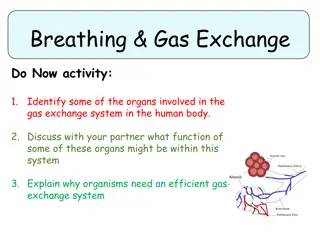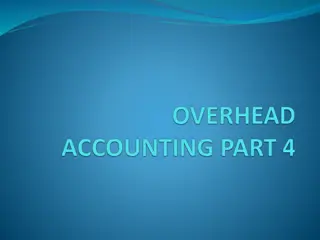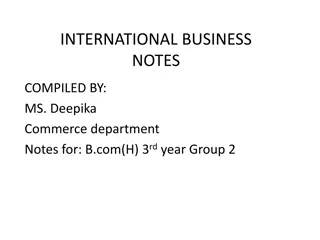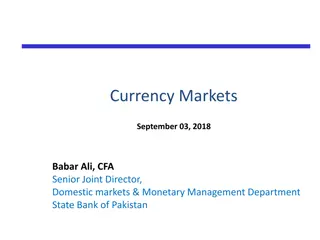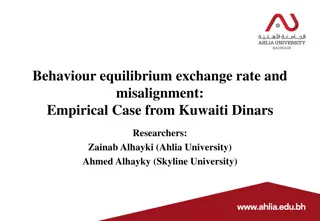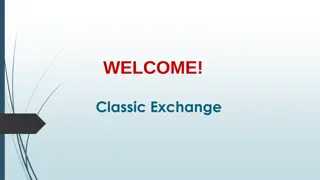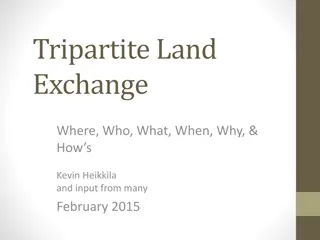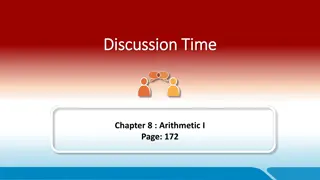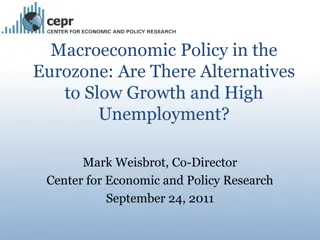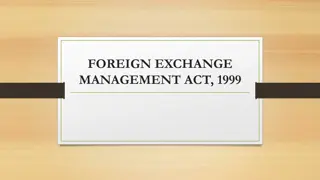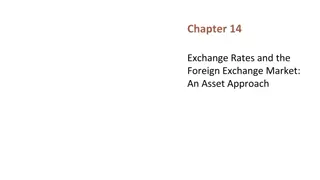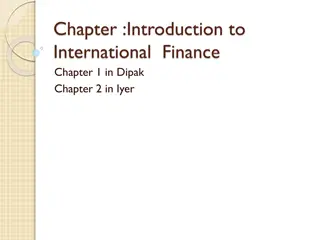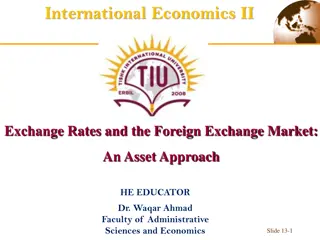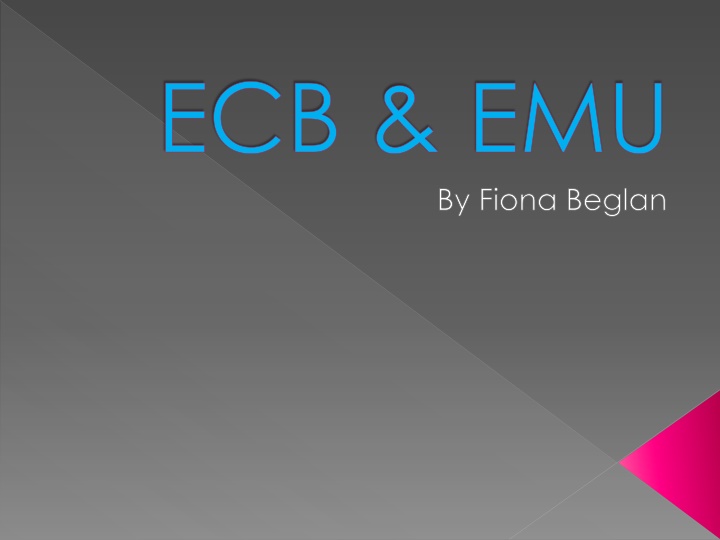
Understanding Exchange Rates and Currency Dynamics
Explore the roles of key entities like the ECB, factors influencing exchange rates, and interventions by central banks. Learn about monetary policy instruments, balance of payments, and how speculators and multinational companies impact currency values.
Download Presentation

Please find below an Image/Link to download the presentation.
The content on the website is provided AS IS for your information and personal use only. It may not be sold, licensed, or shared on other websites without obtaining consent from the author. If you encounter any issues during the download, it is possible that the publisher has removed the file from their server.
You are allowed to download the files provided on this website for personal or commercial use, subject to the condition that they are used lawfully. All files are the property of their respective owners.
The content on the website is provided AS IS for your information and personal use only. It may not be sold, licensed, or shared on other websites without obtaining consent from the author.
E N D
Presentation Transcript
ECB & EMU By Fiona Beglan
The Executive Board: This is a full-time executive board made up of a president, a vice president and four other nominees. The General Council: This is the Executive Board plus the governors of all of the Central Banks in the EU. The Governing Council: This is the Executive Board plus the governors of the Central Banks of the Eurozone Countries.
Monetary Policy Instruments of ECB Main refinancing operations (MROs): These are open market operations with credit institutions (banks) to provide liquidity, cash, for them. The Marginal Lending Facility: Allows banks to borrow on an overnight basis. The Deposit Facility: This allows banks to make overnight deposits Minimum reserve requirements: This lays down the minimum deposit which all banks must have with their national Central Bank
These are the factors that determine the rate of exchange of a currency: The purchasing power parity theory: states that in a free market the rate of exchange will settle at the point where Internal Purchasing Power= External Purchasing Power.
The balance of payments: If the value of a country s exports is greater than the value of its imports the price of the currency will increase and vice versa.
The role of speculators: If speculators feel that a currency will increase in value then they will buy up this currency, increasing it s demand and price.
The role of multinational companies: If a branch of a multinational company in one country has spare cash and another branch in a different country is in need of cash, then they will transfer the spare cash to save interest charges on overdrafts. This will create a supply of one currency, bringing down its value, and a demand for the other, increasing its value.
Intervention by Central Banks: If a Central Bank feels that the rate of exchange of its currency on the international market id either too high or too low in relation to the preformance of its economy, then it can use it s own resources to either buy or sell its currency on the international market.
International agreements: Counties that are members of a trading group will agree to accept each other s currency at fixed rates of exchange in order to eliminate the exchange rate risks involved in international trade.
Fixed rates of exchange:
Advantages of fixed rates of exchange: 1) They eliminate the exchange risk involved in importing on credit. 2) They eliminate the risk involved in international borrowing. 3) Fixed rates of exchange make speculation in currencies futile.
Disadvantages of fixed rates of exchange: 1. Countries may have to use up large amounts of their foreign reserves to intervene on the international markets to maintain the value of the currency at the fixed rate. 2. Governments may have to implement policies which are detrimental to the requirements of their own economy.
Floating rates of exchange:
Advantages of floating rates of exchange: 1) The currencies will automatically reach its real value on the international market, which reflects the state of the economy. 2) Countries don t have to use their foreign reserves to intervene on the international markets. 3) In the long rum, the balance on the current account in the balance of payments can be brought into equilibrium.
Disadvantages of the floating rates of exchange: 1) The element of uncertainty in importing on credit could result in a reduction on international trade. 2) Borrowing on the international market could become expensive. 3) Speculation can undermine the real value of a currency.
Three elements of the EMU The establishment of a single currency The creation of single monetary policy Co-ordination of economic and budgetary policies.
Effects of the introduction of the euro on the Irish economy: On The Consumer: Foreign travel Inflation Price Comparisons Greater Choice of Financial Products Greater Awareness and Competition Prudent Management of the Economy Low Interest Rates on Loans Savers Benifit
In The Commercial Sector: Exchange Risk Eliminated Easier Payment For Trading Lower Interest Rates Cost Of Imported Raw Materials and Capital Goods Pressure for the Domestic Competitiveness Increased Trade Opportunities Fluctuating Value of The Euro
Thanks for Thanks for watching! watching!

